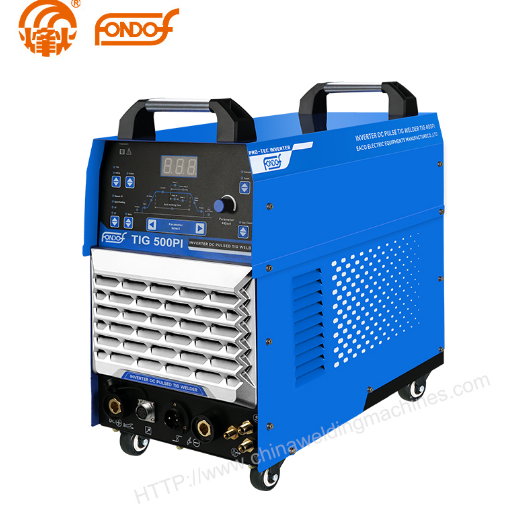Why would someone need an AC/DC TIG welder?
Even if you're relatively new to welding, you likely understand that AC and DC welding involve using electrical currents to create an electric arc between an electrode and the metal to be fused. This process utilizes a power supply to generate the arc, employing either alternating current (AC) or direct current (DC).
The choice of power source (AC or DC) determines the polarity of the electrical current passing through the electrode, influencing the quality and strength of the weld.
Referred to as 'straight' or 'reverse,' the two types of current flow are sometimes labeled as 'electrode negative' and 'electrode positive.' DC polarity remains constant, while AC polarity alternates, flowing in one direction for half the time and in the reverse direction for the other half.
Why would someone need an AC/DC TIG welder?
While many welders often associate TIG welding solely with thin metals, the reality is that TIG welding has diverse applications for both professionals and hobbyists. AC/DC TIG welders prove ideal for various DIY projects, including automotive repairs and pipework.
An AC/DC welder serves as a versatile machine, offering added flexibility to work with a broader range of metals and thicknesses by providing the option to use alternating or direct current. The AC/DC TIG welder comes equipped with features such as variable current settings, up/down slope adjustments, a foot pedal, and multiple time controls. These features enable the expansion of the types of welds one can create and the range of metals that can be worked on.
What is AC TIG welding used for?
Welding aluminum is particularly well-suited for alternating current (AC) TIG welding due to the nature of the alternating current, which includes both positive and negative cycles. The positive cycle effectively cleans the metal surface by removing oxides that could negatively impact weld quality. Conversely, the negative cycle facilitates deeper weld penetration. Together, these two cycles contribute to the production of high-quality aluminum welds.
The challenge with welding aluminum lies in its oxide layer, which is more difficult to weld due to its higher melting point (3200ºF) compared to the base metal (1200ºF). Breaking up this oxide layer is essential for achieving a complete weld. AC welding provides a clear view of the weld pool during this process.
Controlling the heat applied to the weld poses another potential difficulty, given the high conductivity strength of aluminum. Balancing the need for substantial heat with the necessity for control becomes crucial to prevent the weld pool from "running away" or experiencing burn-through. Experienced TIG welders often employ a shorter arc length to confine the heat to a smaller area or use a foot pedal to make real-time adjustments during the welding process.
What can you weld with an AC TIG welder?
AC welding is particularly well-suited for welding aluminum and magnesium, finding extensive application in various industries such as shipbuilding, aluminum pipe TIG welding, automotive work, shipyards, and aerospace applications.
One advantage of AC welding is the ability to set higher currents compared to DC welding, enabling faster fills and making it especially effective for down-hand heavy plate welds. Additionally, AC welding proves beneficial when working with magnetized materials, making it a valuable tool for machinery repairs.

评论
发表评论